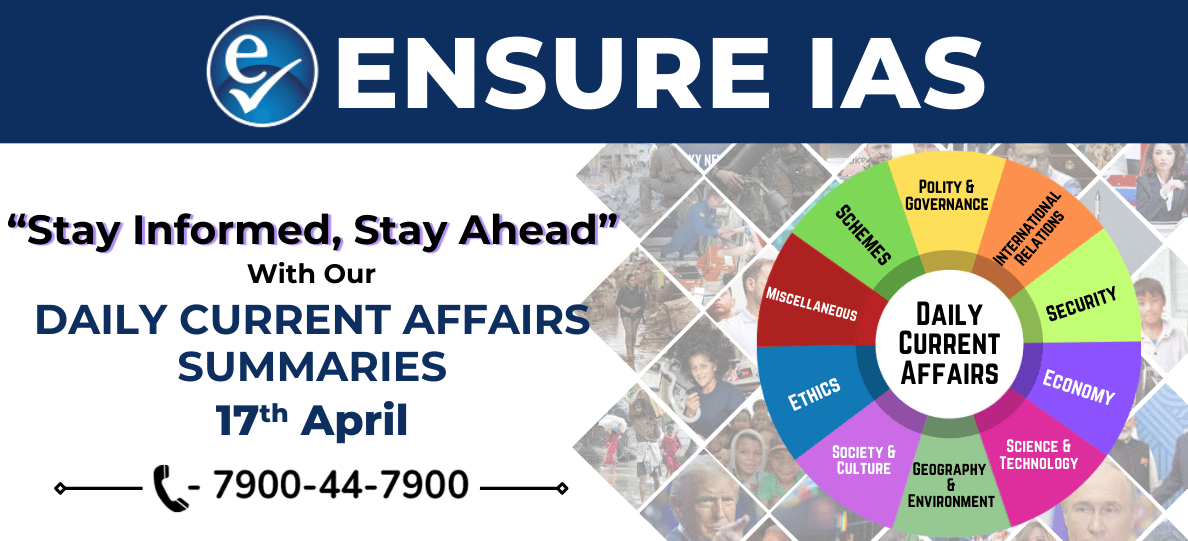- Courses
- ABOUT US
- OUR TOPPERS
- TEST SERIES
- FREE STUDY MATERIAL
- VIDEOS
- CONTACT US
UNHRC Adopts Resolution Linking Ocean Protection and Human Right to a Healthy Environment
UNHRC Adopts Resolution Linking Ocean Protection and Human Right to a Healthy Environment
08-04-2025

- The United Nations Human Rights Council (UNHRC) has, for the first time, adopted a resolution that recognizes the critical connection between plastic pollution, ocean protection, and the right to a clean, healthy, and sustainable environment.
- This resolution marks a significant step towards addressing the growing concerns about marine ecosystems and their impact on human rights.
Key Highlights of the Resolution
- Human Rights Obligations: The protection of marine ecosystems is now formally recognized as part of states' obligations to uphold human rights. This includes ensuring access to a clean and healthy environment for all people.
- Impact of Ocean Degradation: The degradation of oceans is seen as a major threat to humanity, exacerbating global inequalities and disproportionately affecting marginalized populations.
- Pressing Threats to Marine Ecosystems: Despite over 600 international agreements aimed at marine protection, oceans still face significant threats, including climate change, overfishing, pollution, extractivism, and deep-sea mining.
Interlinkages Between Human Rights and Ocean Protection
The resolution underscores the vital links between ocean health and several human rights, emphasizing their importance for current and future generations:
- Right to Food: Healthy oceans provide high-quality protein and micronutrients to millions of people, particularly through fisheries. For instance, coral reefs support the livelihoods of over 500 million people by providing food.
- Right to Livelihood: Approximately 2.4 billion people live within 100 km of coastlines, many of whom depend on the oceans for their livelihood, through industries such as fisheries, tourism, and coastal ecosystem services like mangroves.
- Right to a Healthy Environment: Oceans play a critical role in regulating the Earth's climate, filtering air and water, recycling nutrients, and mitigating the impact of natural disasters. Their protection is essential for maintaining a stable environment for all life forms.
- Rights of Future Generations: Oceans act as a carbon sink, ensuring a stable climate for future generations. Their preservation is crucial for securing the well-being of those who will inherit the Earth.
Constitutional and Legal Framework in India
India has a robust legal and constitutional framework that aligns with global efforts to protect marine ecosystems and uphold the right to a healthy environment:
- Article 51A(g): Under the Constitution of India, this article imposes a fundamental duty on every citizen to protect and improve the natural environment, including forests, lakes, rivers, and wildlife. It also emphasizes compassion for living creatures.
- M.C. Mehta v. Union of India Case (1986): The Supreme Court of India recognized the right to a healthy environment as part of the Right to Life under Article 21 of the Indian Constitution. This landmark case highlighted the need for legal and constitutional safeguards to ensure environmental protection.
- MK Ranjitsinh v Union of India Case (2024): The Supreme Court, in this case, adopted a balanced approach between the conservation of endangered species and the need to address climate change. This judgment reinforces India's commitment to environmental preservation while considering the broader implications of ecological protection.




